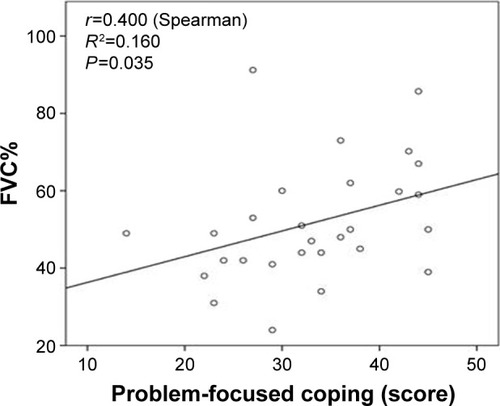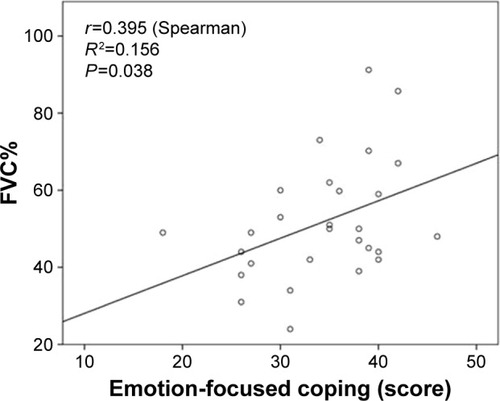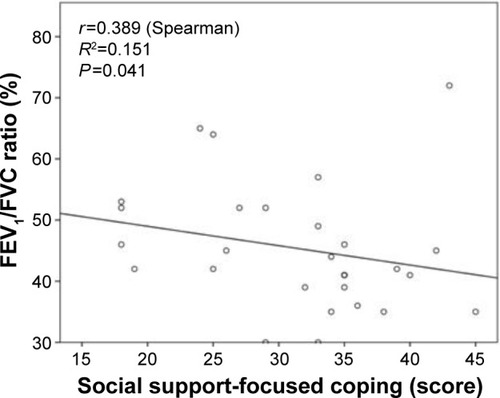Figures & data
Table 1 Patients’ demographic data
Table 2 Studied group characteristics stratified according to their dominant coping type
Table 3 Respiratory parameters in relation to the dominant coping type
Table 4 Correlations between coping scales and respiratory parameters
Table 5 Correlations between depression, anxiety, and respiratory parameters
Figure 1 Correlation between problem-focused coping score and FVC%.
Abbreviation: FVC, forced vital capacity.

Figure 2 Relationship between emotion-focused coping score and FVC%.
Abbreviation: FVC, forced vital capacity.



